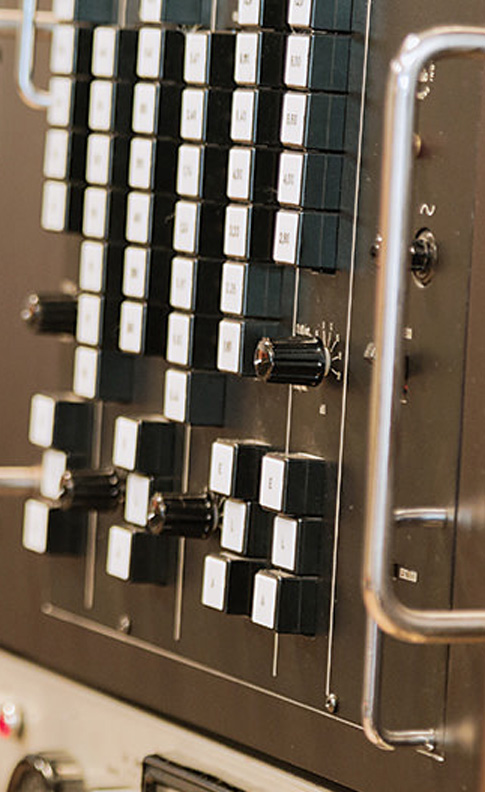It's no real secret how I feel about Eventide. As I'm writing this, I'm fresh off of an insane 36-hour road trip to and from Montoursville, Pennsylvania. Why? A guy was selling a huge pile of gear as a lot, some of it unremarkable, but we drove all the way there and back in a cargo van because there was an Eventide H3000 Harmonizer in the stack! I was so focused on the H3000 and the price, I didn't even realize there was a Lexicon model 200 on the list – score! Anyhow, after more than two decades of banging around studios, I finally own an H3000. Learning more about the company and its history has been fascinating. What struck me about the Rose is its lineage to the very first delay line ever made by Eventide, the DDL 1745, and the way that original line laid the groundwork for digital delay. It was, though a very different device, the great uncle of the Harmonizer series, and the Rose is a direct descendant.
Informed readers will know that I love Eventide's EuroDDL [Tape Op #130], and Tape Op central scrutinizer Eli Crews says the same about the DDL-500 [#111], so I was excited to try the new Eventide Rose modulated delay pedal. It is indeed Eventide's first single-function pedal in quite some time, after spending the last number of years changing the multi-effects game with the H9 Harmonizer [#107]. Exciting! First of all, this pedal is beautiful – I love that it's purple. I like the glowing rose, and it also feels like you could throw the thing off of a building and have no issues. At its heart, the Rose is a modulated delay that is an analog/digital hybrid with a delay range of 10 microseconds to 10 seconds. You can further extend this range to the absurd, which is accomplished by sweeping a variable clock from 8 kHz to 200 kHz. Absurd you say? At 10 microseconds to 50 seconds, it's no hyperbole!
As with the above-mentioned delays, the ONLY digital part in this box is the delay line – the Filter, Mix, and Feedback are all analog. This makes a huge difference, and that difference is way more noticeable when used as a guitar pedal than with my synth.We have all the standard controls you'd expect, Delay Time, Mix, Feedback, a low-pass Filter for the Feedback, plus Rate and Depth knobs for modulation. The Filter is gorgeous, and there is a soft-clipping circuit at the input that sounds amazing when hit too hard. The variable clocking architecture, combined with the aforementioned features, make for a very smooth and warm delay pedal – infinitely stable and VERY analog both in design and vibe. The Delay knob is multi-function. You press while turning to adjust coarsely over ten different delay ranges, and then release while turning to adjust fine increments. At first, this may sound like a pain in the ass, but I found it to be way more effective than adjusting a single small knob that spans 10 seconds! A phi button that flips the phase at shorter delay times, turns the Rose into a reverse delay after 20 milliseconds. There's also a delay range multiplier accessible by pressing the delta button below the Feedback control. You hold this and then use the Shape button, and its five easy to read LEDs, to set the multiplications up to five times! This means you have a very powerful pitch-shifting device on your hands! The extensive modulation section is controlled via the small Shape button and five LEDs to the right of the Rate knob to set the modulation type. You get sine wave, square wave, envelope follower, random, or external. My favorite setting so far is slight random modulation with some filter cutoff for a clean and quiet Roland RE-201 Space Echo vibe. At short delay times, the Rose provides ridiculously lush flanger or chorus effects. Go shorter and you get seriously comb-ey – this is particularly gratifying on snare drums for a super Martin Hannett [Tape Op #103] vibe.
If this all sounds like a deep menu dive, it can seem slightly so at first, but the geniuses at Eventide made either of the Rose's two footswitches an exit button for any cul-de-sac of functionality you may get stuck in. It did take me a second, but I used this pedal straight out of the box (with only cursory knowledge) on a session and it was fantastic. After a few overdubs, my brain began to absorb the Rose's workflow, and I was using MOST of its features as second nature. Let's just say it's a very deep pedal but also very intuitive. It's definitely the kind of thing you could heavily get down with (during one of those "take a knee" live performances) while playing the Rose like an instrument. You can also hit the expression jack with CV from your modular synthesizer and perform a myriad of other crazy switching and TRS MIDI fun like fading between presets. I didn't get into this zone at all, but I've seen people doing the preset fade and its quite dramatic.
Here at High Bias Recordings, we use this pedal about half of the time on guitars and synths for overdubs, and the other half as an aux on the console. The Level (Line/Guitar) input switch at the jack makes this a snap. This feature is also great for doing FOH if I'm on a gig where I need a good slapback delay but don't want to lug a Pelican case all over town. I did this recently at a great Raconteurs acoustic set at Third Man Records [#127], and no less than three dudes asked me if it was a real tape echo unit! I said, "What do you think?" At the end of the day, if you have to ask, then the price of this pedal is a steal!




_disp_horizontal_bw.jpg)